Pangasius spp is commonly called as river or silver stripped catfish, Siamese shark, sutchi catfish, or swai catfish. This fish species live in freshwater and endemic to the Mekong basin. It is a riverine catfish belonging to the members of the family Pangasidae. It exhibits fast growth when cultured given a good environment.
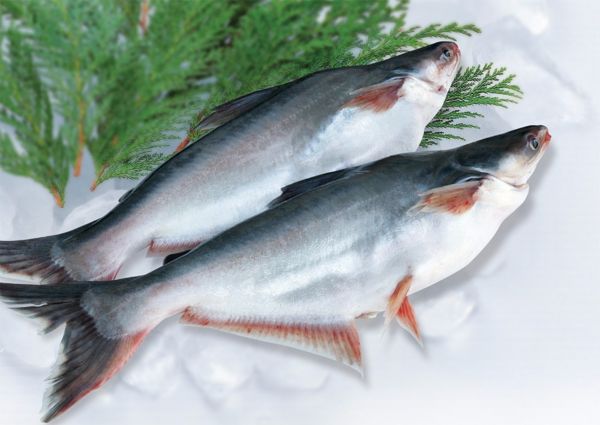
It is cultured due to its strong market demand, fast grower, few countries dominate the culture production, and being the 3rd most important freshwater fish group within aquaculture sector. Pangasius is now cultured in several countries in the world like Thailand, Nepal, Pakistan, India, Bangladesh, Vietnam, Laos, Myanmar, Indonesia, and Cambodia.
Pangasius is an air-breathing fish that can tolerate low Dissolve Oxygen (DO) of the water. It can be cultured in fishponds, concrete tanks, fish cages or fish pens.
Common Cultured Pangasius:
• Scientific name: Pangasius hypophthalm. English name: Sutchi river catfish.
• Scientific name: Pangasius bocourti. English name: Bocourts catfish
Site Selection
Efficient source of water
Free from pollution
Free from any disturbance
Free from poachers
Source of electricity
Size of Culture System
Pond
The ideal pond compartment is 1,600 to 2,400 sqm.
The ideal water depth is 1.5-2 meters.
Cage
The ideal size is 10×10 meters.
The ideal depth is 5 meters.
Stocking density is 15-50/m3
Pond Preparation – Pond preparation is the same as general preparation for fish ponds.
Draining and sun drying. Sundry the pond until the pond bottom cracks to eliminate unwanted fish species and condition the pond. Stocking should be done early morning or late afternoon. Survival rate of Pangasius spp. is estimated to be 80-90% depending on the culture environment.
Repairing of dikes and gates. Dikes and gates should be repaired to avoid entry of other fish and escape of stocks.
Eliminating predators. Predatory fish species should be eliminated to promote better yield and harvest.
Liming. Liming is done primarily to condition pond soil, since Pangasius spp. can tolerate pH ranging from Q.5-7.5.
Filling of water. Fill the pond with water to about 1.5m to 2m deep, to provide a wide environment for the stocks.
Stocking/stocking density. Pangasius spp. can be stocked at a rate of 3-15 pcs/m2
Pond Management
Feeding/feeding management. Pangasius can be fed with kitchen waste, rice bran or pelleted feeds (recommended for faster growth and better fish quality) at a rate of 2.5% of their average body weight (ABW) and will be adjusted bi-weekly. Feed Conversion Ratio (FCR) averages to 1.5:1, which makes it a suitable for culture. Pangasius is omnivorous (eat both plants and animals) during their first year and become herbivorous for the following years.
Since they are omnivorous, the Pangasius Catfish or Iridescent Shark Catfish will generally eat all kinds of live, fresh, and flake foods. To keep a good balance give them a high quality flake food or pellet everyday. Feed brine shrimp (either live or frozen) or blood worms. As they get older they loose their teeth, and like the Pacus, become more and more vegetarian. “Home-made” mixture of boiled vegetables, rice-bran and broken rice may also be used for feeding.
Water management. Water is important for all fish, so optimum conditions for certain parameters of water should be the primary factor to consider in engaging to fish culture. Water quality parameters like pH (6.5-7.5), Dissolve Oxygen (DO) (0.1 mg/l), Temperature (25-30° C), Salinity (<2 ppt) and water depth (1.5-2m). These should be maintained to get a better yield for the culture of Pangasius spp. Pangasius spp. is an air breathing fish thus, they don’t need to have a much higher DO in the water column.
Sampling. Sampling is done to monitor the growth of stocks and to compute feeds to be given to the stocks for the following days. This is also done to see if the stock reaches its marketable/harvestable size. Since Pangasius spp. is fast grower fish, sampling is mandatory.
Harvesting
Harvesting can be done in partial (selective harvesting) or total harvesting. Pangasius spp. can be harvested for about 5-6 months of culture period. It can reach the weight of 1-1.5 kilogram in 5-6 months culture given the proper pond management.
For more information, contact:
Bureau of Fisheries and Aquatic Resources (BFAR)
San Fernando, Pampanga
Tel: (045) 455-0878, Fax: (045) 455-0823
Email: bfar3@pldtdsl.net, bfar3@yahoo.com
Source: bar.gov.ph
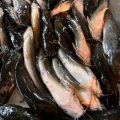

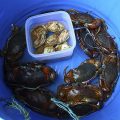
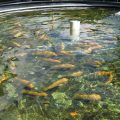
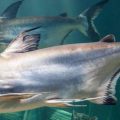


Good day!
I am very interested to learn and start Pangasius Farming (small scale). Do you sell Pangasius fingerlings? How much does it costs? Thank you very much.